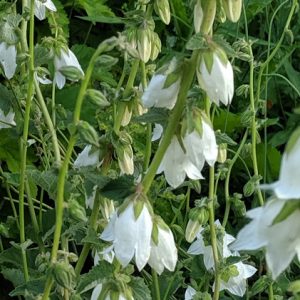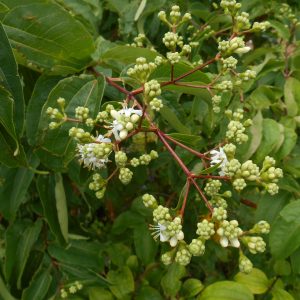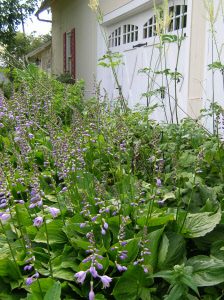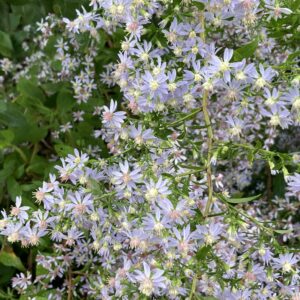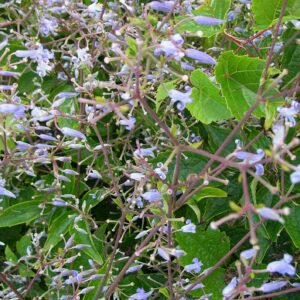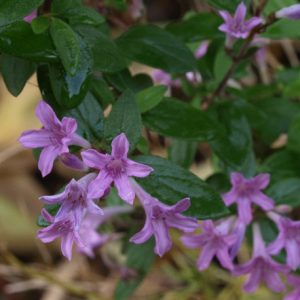Search Results for: bleeding heart vine
-
Campanula ochroleuca Bellflower Z 4-7
...covered with fine hairs with five, flared petal-ends surrounding ivory stamens and pistil along erect to arching stems. Blooms June-July on slow-spreading, clump-forming rosettes of hairy, heart-shaped or triangular leaves....
OUT OF STOCK
Ivory, rocket-shaped buds open to bell-like blossoms covered with fine hairs with five, flared petal-ends surrounding ivory stamens and pistil along erect to arching stems. Blooms June-July on slow-spreading, clump-forming rosettes of hairy, heart-shaped or triangular leaves.
Size: 12-18” x 12-15”
Care: sun to part shade in moist well-drained to well-drained soil
Native: Caucasus
Wildlife Value: provides pollen to bees and butterflies, rabbit resistantFirst described in a published document in 1949.
-
Campanula alliariifolia syn. C. gundelia syn. C. kirpicznikovii Ivory Bells Z 3-7
July-August, creamy white bells dangle on spires above heart-leaved foliage. Vigorous. Cut back to promote 2nd flowering...
July-August, creamy white bells dangle on spires above heart-leaved foliage. Vigorous. Cut back to promote 2nd flowering
Size: 18-24” x 18
Care: sun to part shade in moist well-drained soil
Native: the Caucasus and Turkey
Wildlife Value: attracts bees, butterflies and birdsCampanula is Latin meaning “little bell.” Described by Carl Ludwig von Willdenow in 1798
Highly touted by Graham Stuart Thomas, who once referred to it as a “picture of poise and beauty,”
-
Viola corsica Corsican violet Z 4-8
ARCHIVED Note: This is a plant not currently for sale. This is an archive page preserved for informational use. Rare species violet. Clouds of blue violets with veined heart leading...
ARCHIVED
Note: This is a plant not currently for sale. This is an archive page preserved for informational use.
Rare species violet. Clouds of blue violets with veined heart leading to tiny yellow centers from late spring thru fall-blooms its head off. Reliably perennial. More heat tolerant than pansies.
Size: 5-7” x 8-10”
Care: sun to part shade in moist well-drained soil.
Native: Corsica1st described by Swedish botanist Carl Fredrik Nyman before 1893.
-
Heptacodium miconioides Seven son flower Z 5-9
...red-brown peeling bark and glossy heart-shaped leaves. “Avant Gardener” newsletter September 2011, calls it the “two-bloom tree,” saying, “more and more praise is being lavished on a rare late-flowering shrub/tree...
Fragrant white flowers August–September then in October clusters of burgundy-red calyces surround the fruit capsules as showy as the flowers on this large shrub or small tree. Ornamental tan and red-brown peeling bark and glossy heart-shaped leaves. “Avant Gardener” newsletter September 2011, calls it the “two-bloom tree,” saying, “more and more praise is being lavished on a rare late-flowering shrub/tree … even more showy (than the panicles of fragrant white flowers) is its ‘second bloom’, consisting of red-purple calyxes which remain after the flowers fall…well into October.”
Size: 15’ x 10-12’
Care: sun in moist to moist well-drained soil, drought tolerant. Prune in late winter to make it bushy, maintain shape or reduce size, if you wish.
Native: China
Wildlife Value: Attracts butterflies & bees, Deer resistant. Salt tolerant.
Awards: 2011 Great Plants Shrub of the Year; 2008 Plant Select®; Cary Award Distinctive Plants for New England & Pennsylvania Horticultural Society Gold, Missouri Botanical Garden Plant of MeritHepta means seven because each inflorescence has 7 flowers, and codium means flower. Collected initially by E H Wilson in 1907 at about 3000 feet in Hupeh Province. Rare in its native China.
-
Symphyandra pendula Bellflower Z 5-8
OUT OF STOCK Panicles of creamy white bell-shaped flowers dangle over heart-shaped foliage March-June...
OUT OF STOCK
Panicles of creamy white bell-shaped flowers dangle over heart-shaped foliage March-June
Size: 20” x 12”
Care: Full to part sun in well-drained soil
Native: Caucasus
Wildlife Value: attracts bees, butterflies and birdsCollected before 1830
-
Dracocephalum rupestre in China mao jian cao Z 4-8
True deep blue, hooded flowers rise above heart-shaped, crinkled foliage in the heat of mid-summer
True deep blue, hooded flowers rise above heart-shaped, crinkled foliage in the heat of mid-summer
Size: 12’ X 12”
Care: sun to part shade in well-drained to moist well-drained soil
Native: Western China in alpine meadows and grassy slopesFirst named in the West in 1867, Journal of Botany, British and Foreign, Vol 7 p. 166. Dracocephalum means “dragonhead” in Greek. Chinese made a tea from this.
-
Hosta ventricosa Z 3-8
In late summer rich lavender bells periscope over heart-shaped, prominently veined foliage. Can not ship to: Maryland...
In late summer rich lavender bells periscope over heart-shaped, prominently veined foliage.
Can not ship to: Maryland
Size: 20" x 36"
Care: Part shade in moist to moist well-drained soil. Tolerate Walnut toxicity
Native: China
Wildlife Value: attracts hummingbirds
Awards: Received England's Royal Horticultural Society Award of Merit.Japanese called Hostas Giboshi and ate young leaves in spring as a vegetable Hosta was named for Dr. Nicholas Host (1761-1834) the physician to the emperor of Austria. Hostas, cultivated since at least the 12th century in East Asia. Empress Josephine grew this at Malmaison. Redoute, Josephine’s botanical illustrator, painted H. ventricosa in 1805.
-
Aster cordifolius syn. Symphyotrichum cordifolium Blue wood aster Z 3-8
Heart-shaped foliage smothered with blue daisies from late summer into fall, perfect companion for anemones. ...
Heart-shaped foliage smothered with blue daisies from late summer into fall, perfect companion for anemones.
Size: 2-3' x 2-3'
Care: Sun to full shade in moist well-drained to dry soil
Native: Canada to Florida, west to Oklahoma, Wisconsin native
Wildlife Value: Aster species are nectar sources for many butterflies – Checkered white and Checkered skippers, Spring azure, Pearl crescent, Buckeye, Painted lady, Fiery skipper, Sachem, Sleepy orange, Silver-spotted skipper and Monarch.Winnebago used this in the sweat bath. 1st described by Jacques Philippe Cornut in 1635. Likely collected and transported to France by Samuel de Champlain (1567-1635.) founder of Quebec who traveled from France to “New France” at least 21 times. Grown in Jardin du Roi in Paris.
-
Clematis stans Japanese clematis Z 4-8
Fragrant, smelling of sweet violets, soulful blue starry nodding bells with petals that flip up at the ends (recurved) Blooms August – September. Ships only in spring...
Fragrant, smelling of sweet violets, soulful blue starry nodding bells with petals that flip up at the ends (recurved) Blooms August – September. Ships only in spring
Size: 30" x 24"
Care: sun to part shade in moist well-drained soil
Native: JapanStans means “upright” as this is a bush, rather than a vine. (OK, we’ve put this in the vine category and it’s not a vine. But most people think of Clematis as vines and we didn’t want you to miss it.) In Japan called “Kusa-botan.” Collected by Ernest Henry ‘Chinese’ Wilson before 1910.
-
Leptodermis oblonga Dwarf lilac Z 5-8
Low mounding shrub with fragrant lavender, lilac-like trumpets blooming in June – October. Leaves slow to leaf-out in spring but then blooms its heart out....
Low mounding shrub with fragrant lavender, lilac-like trumpets blooming in June – October. Leaves slow to leaf-out in spring but then blooms its heart out.
Size: 12-18” x 18-24” spreads by suckers
Care: sun to part shade in moist well-drained to well-drained soil
Native: No. & W. China & Himalayas.
Wildlife Value: Attracts hummingbirdsLeptodermis means “thin skin” and oblonga refers to the oblong leaves.
Introduced by E.H. Wilson in 1905.


